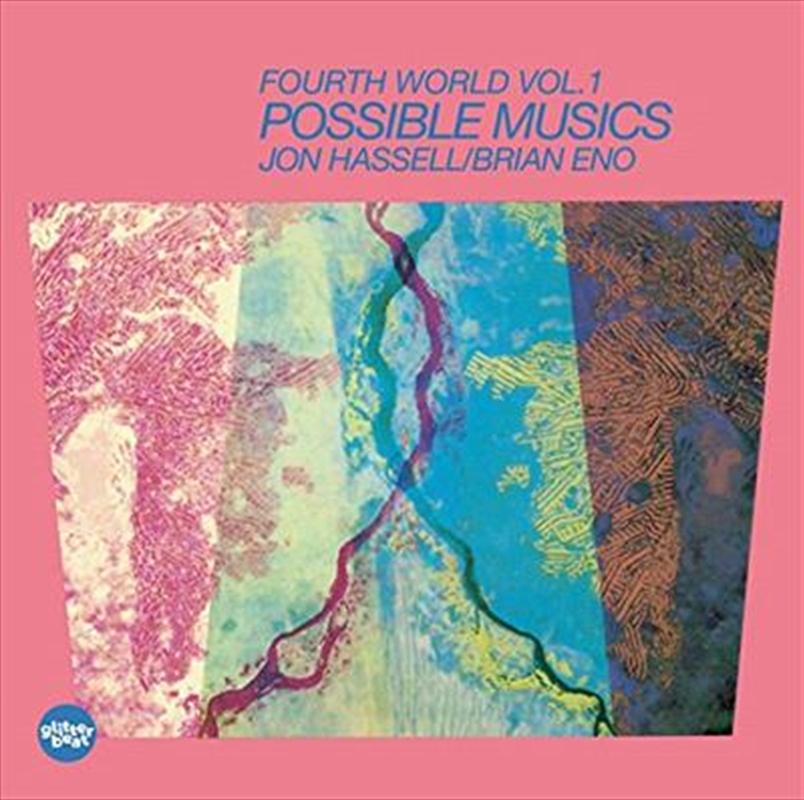Originally released in 1980, Jon Hassell and Brian Eno's collaborative album Fourth World Music Vol. I: Possible Musics is a sound document whose ongoing influence seems beyond dispute. Not only is the album a defining moment in the development of what Eno coined as "ambient music" but it also facilitated the introduction of Hassell's "future primitive" trumpet stylings and visionary "Fourth World" musical theories to the broader public. These vectors continue to enrich contemporary audio culture. Eno's ambient strategies are now fixed in the DNA of electronic music and the cross-cultural legacy of Hassell's "Fourth World" concept is apparent not only in the marketplace genre "World Music" but also more persuasively in the accelerating number of digitally-driven, borderless musical fusions we now experience. By the time that Eno and Hassell met, Hassell's experiments with a "Fourth World" musical vocabulary were well underway and in fact it was because of these experiments, particularly Hassell's debut album Vernal Equinox that Brian Eno purposefully sought him out. Within a couple of months of Hassell's performance at the Kitchen the duo entered Celestial Sound in New York City and began work on what would become Fourth World Music Vol. I: Possible Musics. Hassell invited previous collaborators like the Brazilian percussionist Nana Vasconcelos and the Senegalese drummer Ayibe Dieng to join the sessions. Most of the tracks carry a Hassell/Eno writing credit, though the 20-minute "Charm (Over 'Burundi Cloud')" was a carryover from Hassell's concert repertoire. Hassell has made it clear in several interviews over the years that the album's shared billing was at least partly inaccurate and that Eno's contribution was mainly as a producer. More spiky, angular and steeped in rhythm and exoticism than most of Eno's records and more drone-based, reflective and sonorous than most of Hassell's outings, Possible Musics - whatever the actual division of labor in sound and concept - is a seminal highlight in both of their discographies. A meeting of two of the late 20th century's most restless and prescient musicians, the album sounds as beguiling, indeterminate and otherworldly today as it did 34 years ago when it was originally released. The impact of Possible Musics on the contemporary music conversation was almost immediate. Just ten days after it was mastered, Brian Eno and David Byrne convened in Los Angeles to continue experiments inspired in part by Hassell's musical theories. The resultant album would be called My Life in the Bush of Ghosts. All parties involved agree that Ghosts was originally conceived as a trio project that included Hassell but the idea fell apart over disagreements about logistics and musical direction. Hassell still remains bitter about what he considers the projects un-credited appropriation of his musical signatures. From there it was a short jump forward to the chart-topping, Afro-futurism of the Talking Heads Remain in Light, an album that Eno co-produced and Hassell guested on. "Fourth World" strategies have echoed, and can still be heard echoing in the music of Peter Gabriel, Nils Petter Molvaer, Bj+¦rk, David Sylvian, David Byrne, Ryuichi Sakamoto, Damon Albarn, DJ Spooky, Jah Wobble, Matmos, 23 Skidoo, Goat, Bill Laswell, Mark Ernestus, Adrian Sherwood, and of course, the ongoing projects of Eno and Hassell themselves. Glitterbeat is proud and honored to re-release and re-introduce this compelling, groundbreaking album.
Title: Fourth World Volume 1- Possible Musics
Format: CD
Release Date: 21 Nov 2014
Artist: Jon Hassell & Brian Eno
Sku: 2287453
Catalogue No: GBCD019
Category: World
Disc Count: 1
Transfer Format: Compact Disc
Video Format: World Music
Primary Audio: GBCD019
Language: 4030433601921
Subtitles: MGM Music






